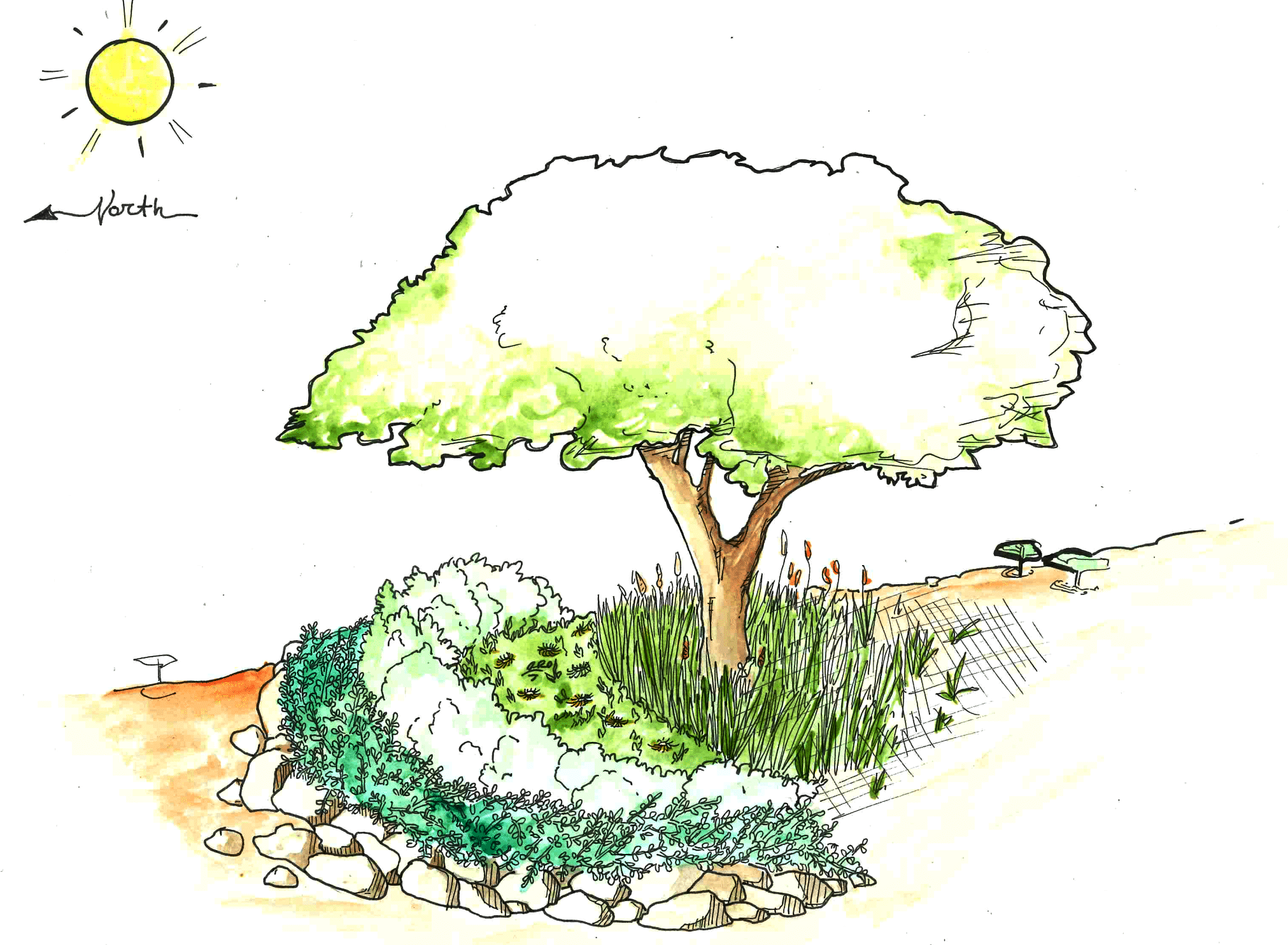In permaculture, there is an important concept known as guilds. A guild, in permaculture terminology, is a group of different organisms that are mutually beneficial to one another. Each member, or element in the guild fulfills certain functions. We call that filling a niche. One (simplified) example that we can often see in nature is a field of perennial grasses, with vetch and clover growing around them. The vetch and clover fix nitrogen from the air, making it available to the grasses. Another element to this guild is the mower, which can be a grazing animal, like sheep, cows or goats, or it can be a person with a scythe or a lawnmower. This is the element that maintains the guild’s stability. Without a mower, there would remain an empty niche, and the field would either burn regularly or become overgrown with bushes and eventually become a forest, with it’s own guilds. This guild is actually a very useful one in farming. If the mower is a grazing animal, it creates it’s own niches that we can choose how to fill, if we want to. Grazing animals drop manure, often with parasite eggs in it. Flies lay eggs in the manure, and worms eat it. This is exactly the kind of situation that chickens like. The cows create a niche for chickens. So you have a paddock grazing system, where the cows graze one paddock, then the sheep graze it even lower, then the chickens come in and clean up after the grazers, eating the parasites and the maggots and some worms and grasshoppers and scratching up the manure patties, spreading them out. That way, the manure decomposes much faster and more evenly fertilizes the pasture. After the chickens move off, the pasture paddock rests 30 to 70 days. This is the growth period for the plants to build up biomass again.
So in permaculture we design guilds. We put sets of elements together in beneficial configurations. Consider another four elements.
- The siberian pine. This tree gives nuts, resin and lumber. It acidifys the soil. It has a deep root system, that doesn’t spread out sideways very far. It blocks the wind quite well. pines are often cut for new year’s.
- The spruce, which also tends to acidify the soil. The spruce has a rather shallow spreading root system, and is also quite good at stopping the wind. Spruces are often cut for new year’s.
- Then there is the birch tree. The birch tree has white bark and reflective leaves, and can fix nitrogen. It gives a product of birch juice.
- The blueberry. The blueberry gives tasty berries, that are always in high demand. It gives the best yields in acidic soil and partial shade.
Spruces and pines are both often cut for new year’s. Pines and spruces can grow very closely together, because their root systems take up different parts of the soil. The birch tree actually transfers nutrients to conifers like pines and spruces through fungi in the soil.
So you plant a line of pines and spruces, planted quite densely. On the sunward side of this line, you plant a more sparse line of birches, maybe 1 for every three conifers. Next to and sunward of the birches, you plant your blueberries, and then, a few more meters to the sunward side you can have another dense line of pines and spruces. This can be repeated several times.
So how does this guild work? The birches help to fertilize the entire guild, and reflect light down to the blueberries, allowing the pines and spruces to be closer to the blueberries on the sunward side than would otherwise be ideal. The pines and spruces create an exellent windbreak for the bushes, and if the guild is set up as a long stripe through the landscape, it can also shield cattle from strong winds and sun. A cow in the wind loses a lot of weight just keeping warm. Then there are the mushrooms which will inevitably start growing under the trees. You can also inoculate it with high-value gourmet mushrooms. Occasionally, you might let chickens into this system, to reap the bounty of insect life that lives under the trees.
So the guild is greater than the sum of it’s parts. It yields birch juices, blueberries, timber, new years trees, pine nuts, several different kinds of mushrooms, increased beef yields and chicken eggs, all as byproducts of a windbreak.
Image sources / Источники изображений
- ddzxzzl-474751c4-7a23-43df-a6fd-60b1706392a6: Ishitora | BY-NC-ND 3.0 Unported

Leave a Reply